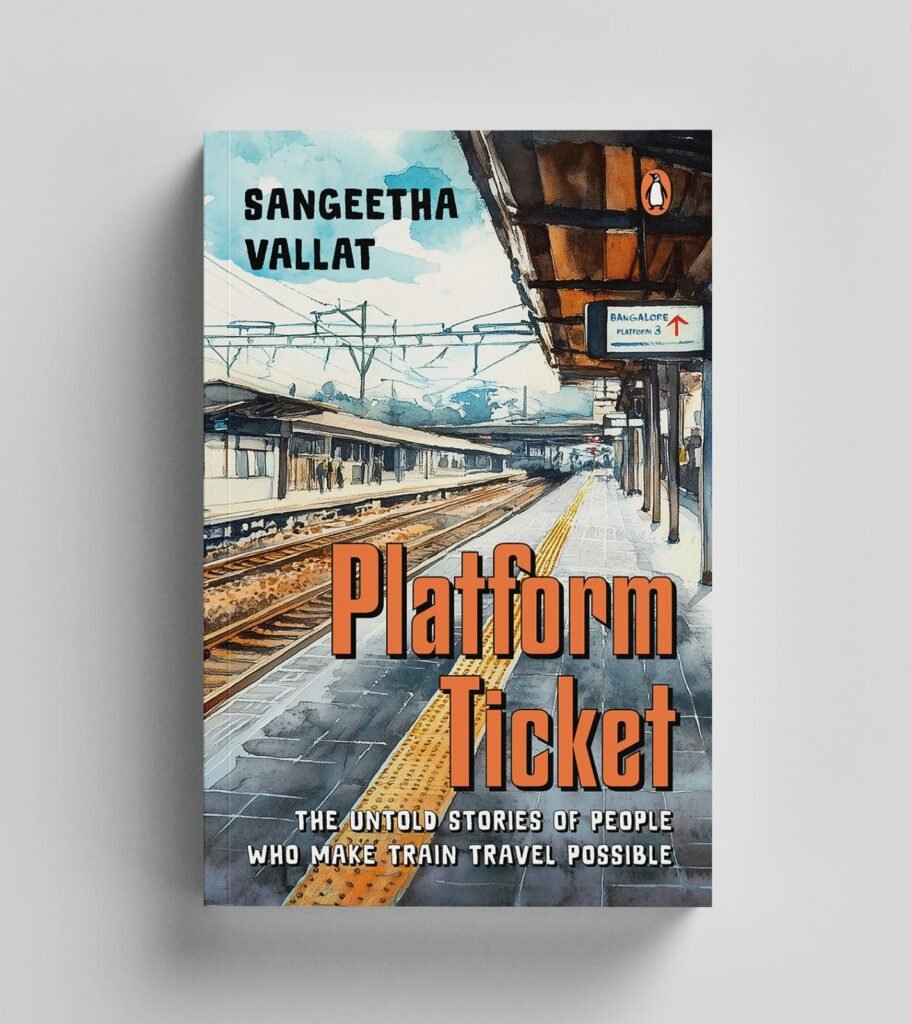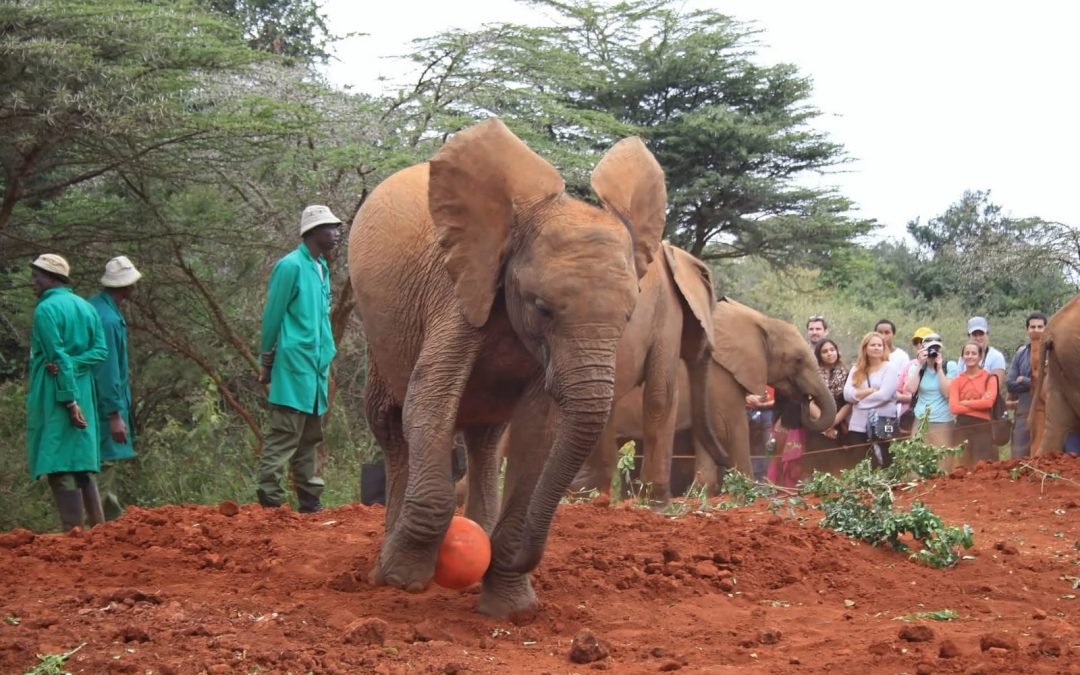
by Sangeetha Vallat | Jul 10, 2025 | Passport Pages
CHAPTER 4 KWAHERI (GOODBYE) KENYA
From Falls to Farewells: Wrapping Up Our Kenyan Adventure
To be honest, Thomson’s Falls didn’t quite live up to the hype. I’ve seen grander ones, and the constant presence of Maasai tribals and touts asking for a fee to click pictures dampened the charm. Word of caution, don’t be fooled by the friendly poses; there’s usually a price attached.
We had a long drive ahead to Nairobi, and as always, I kept Moses, our guide, company with a flurry of questions. At one point, I went quiet, and he instantly asked if everything was okay. That’s Moses for you, observant and kind.
Something curious caught my eye along the way. For the sixth time on this trip, I saw men lying prostrate on the roadside in a very specific “X” position – arms and legs splayed. My first thought: Are these drunkards passed out? It’s not an unusual sight in India, after all. But Moses explained something far more humbling. These were weary travelers, some of whom had walked for days, either searching for work or trying to sell their goods. When exhaustion hits, they simply collapse and sleep wherever they can. The unspoken rule? Don’t disturb them. Let them rest and continue their journey.
We passed through several counties- Nyeri, Laikipia, Kisumu (or was that near Masai Mara?), and Narok. The order blurred, but the landscapes never failed to charm. At Subukia County, we stopped at a Rift Valley viewpoint. We were traveling on the A104, a major highway in Kenya. Moses explained the road system: “A” for international trunk roads, “B” for national, “C” for primary, and so on.
Soon we hit a massive traffic jam and had to divert onto a dusty, chaotic off-road path. Vehicles formed four messy, self-created lanes with a few good samaritans stepping in to direct traffic. We crossed Kikuyu town, home to Kenya’s largest tribe. Kenya’s first President, Jomo Kenyatta, and his son, Uhuru Kenyatta, both belong to the Kikuyu community.
A stretch lined with towering Cypress trees came next. Moses shared that this area was once infamous for highway robberies. Thankfully, those days are long gone.
By late evening, we rolled into Nairobi, checked into our hotel, and headed straight to Carnivore Restaurant, a must-visit for any adventurous foodie. Think: chicken, lamb, beef, pork, turkey… and the exotics – crocodile, ostrich, and yes, ox balls. A feast fit for the wild-hearted. Bellies full, we slept like babies.
Originally, our plan was to visit the Masai Market, but we called the agency and paid extra to swap it out for something more exciting….The Giraffe Centre and David Sheldrick Elephant Orphanage.
Nairobi surprised us with its green and clean appearance. Sujith was curious about the city’s upscale neighborhoods, so we drove through Arboretum Road and Langata Road, passing the State House and some prominent universities along the way.
We considered visiting Bomas of Kenya (Bomas means homestead or livestock enclosure), a cultural center showcasing tribal dances and traditional homes, but with limited time, we made a mental note to save it for our next visit.
Our route took us to Karen, a leafy suburb named after Karen Blixen, the Danish author of Out of Africa, who lived here for 17 years, running a coffee plantation. Her expansive farmland is now home to universities and posh residences.
Along the way, we were delighted by the quirky, brightly painted Matatus – Kenya’s version of our Chennai “share autos,” only louder, more vibrant, and pulsing with music and energy. Packed to the brim, they truly are the lifeblood of local transport.
At the Giraffe Centre, we got to feed the elegant Rothschild Giraffes. A volunteer could identify each one by name and personality. I eavesdropped (okay, I joined in) on a guide’s talk to a group of British tourists and asked how giraffes eat thorny Acacia leaves. Turns out, giraffes are pros at navigating the thorns, and even if they get pricked, their saliva is antiseptic! Nature really thinks of everything.
I even clicked a picture of the giraffe list, names, ages, and all. What a charming bunch!
Next up was the David Sheldrick Elephant Orphanage, open to the public only between 12:00 and 1:00 pm feeding time! It was crowded, and I initially had to peek between the elbows and hips of two tall men in front of me. Thankfully, a kind woman moved, and I got front-row views of the adorable chaos. The baby elephants were splashing, rolling in the sand, and charging toward their milk bottles like toddlers to candy. They gulped the milk in seconds.
The staff shared stories about how each elephant ended up there, many rescued from poaching or abandonment. They explained the sponsorship process and how the elephants are rewilded once they turn three. We were there for nearly an hour, hearts full.
Lunch was a delightful Indo-Chinese fusion, and then it was time to head to the airport.
We exchanged numbers and email addresses with Moses, our fantastic guide, and thanked him for being such a significant part of this journey.
Kwaheri, Kenya
And just like that, my peregrinations came to an end.
However, not without one last twist….the airport lost our luggage, and we waited nearly two hours for it to arrive. Kenya clearly didn’t want our adventure to end!
This was more than a vacation; it was a memory etched in wildlife, landscapes, laughter, learning, and the warmest people. A trip that left us changed, even in the subtlest ways.
Farewell folks. Until next time.
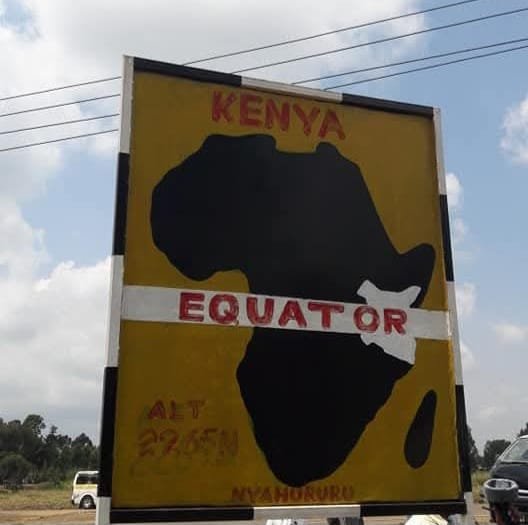
by Sangeetha Vallat | Jul 10, 2025 | Passport Pages
CHAPTER 3 JAMBO FOLKS
From Acacias to Flamingos: A Journey Through Kenya’s Wild Heart
After a memorable stay at Siena Springs Camp, we packed our bags and hit the road toward Lake Elementaita. I claimed the front seat, camera in hand, firing away random questions at Moses, our ever-patient guide, who answered each one with enthusiasm and warmth.
As we drove, the scenery began to shift. The iconic flat-topped Acacias and Mara trees started to thin out, making way for the striking yellow-barked Acacia, also known as the fever tree or Naivasha thorn. These trees are fascinating; not only do they perform photosynthesis through their bark, but they also help maintain the water table. Local tradition holds that their roots, when brewed, help new mothers regain their strength after childbirth. We also passed by groves of whistling thorn acacias, trees that house ants in a fascinating symbiotic relationship. Take it from me: steer clear unless you want to get swarmed!
Soon, we reached Lake Naivasha, a freshwater gem and the highest-elevation lake in the Kenyan Rift Valley. Its name, Nai’posha in Maasai, means “rough water,” though on this particular day, the lake was anything but. It looked calm and still, almost serene. Our boatman, David, helped us aboard, and we set off across the water.
The lake was a haven for birdlife – huge pelicans struck dramatic poses, while ducks and geese floated by like royalty. Barren trees stood silently in the middle of the lake, and I couldn’t help but click away. My cousin teased me, saying my obsession with photographing trees against open skies was a classic “only child” trait. Maybe there’s some truth to it!
David gave us a heads-up and tossed a fish into the lake. Within seconds, a majestic eagle soared from a distant tree, circled above us, then swooped down and snatched the fish with incredible precision. This mini-show repeated a few times and never got old.
Then came the unforgettable moment- a bloat of hippos surfaced, their eyes, ears, and nostrils just peeking above the water. Although they’re herbivores, their sheer size and numbers made the moment spine-tingling. A few even emerged fully, as if striking a pose for our cameras.
Boating done, we continued to our overnight stop: Lake Elementaita Cottages. The lake stretched wide, bordered by misty mountains. Our cottage sat just 20 feet from the water’s edge, an idyllic spot if there ever was one.
However, lunch came with an unexpected guest: flies, zillions of them. They swarmed like mosquitoes, landing on our plates and faces. I had to eat with my mouth shut (Sujith probably appreciated the quiet). The hotel staff reassured us that they were harmless, but that didn’t stop one uncle from spraying mosquito repellent as if it were perfume. Caught in the spray zone, I was liberally sprayed upon. He turned to me, proudly pointing at his wrist gadget, and said, “This creates a safety zone. Africa is a dangerous place.” To be fair, it worked; we could finally enjoy our food.
We tried Ugali, a Kenyan staple made from maize flour. It reminded me of Karnataka’s Raagi mudde, though paler in color. Let’s just say… it was an acquired taste.
As the drizzle set in, we armed ourselves with a broken umbrella (from the cottage), camera, and binoculars, and walked along the lake’s edge. Across the water, flocks of pink flamingos shimmered in the distance, visible only through binoculars. They were expected to fly closer by morning.
And fly they did.
At dawn, we stood in awe as the flamingos drifted across the lake, their soft pink feathers glowing against the early light. The camera couldn’t do justice to the moment. Grebes floated nearby, and blue-spotted doves cooed from the cottage rooftops.
Next on our itinerary: the Equator Line and Thomson’s Falls, followed by an overnight stay in Nairobi. The drive from Elementaita took us through a series of small towns – Gilgil, Ntule, Kekiyoupe, and Nyandarua. The roads wound through barley and maize fields, children waved from the roadside, and local markets buzzed with life. Donkey carts ambled past, while colorful fruit and veggie stalls lined the streets. Fun fact: the tomatoes here are incredibly sweet, I genuinely considered buying for home!
I need to tell you my friends, the cacti here are so giant, they grow like trees. I was particularly attracted to one shaped like a candelabra, and Moses said it was called the candelabra cactus. I was thinking of a similar one planted in my home in a small pot, not giving it enough space to grow immensely!
Moses chuckled when I compared it to the poor, stunted one growing in a tiny pot back home.
Eventually, we reached Nyahururu town and Nandi County, home to the iconic Equator Line. We watched the classic experiment where water spins clockwise in the Northern Hemisphere and counterclockwise in the Southern Hemisphere, and stands still on the Equator. Tourists scrambled to film it, and yes, I got the certificate for crossing the Equator (you never outgrow souvenirs).
Sujith and I stood on either side of the Equator line, holding hands and laughing as others followed suit. After some hard bargaining and shopping for tribal art (my house is slowly becoming a mini-Africa), we ended the day with steaming chai and local banter.
Our final stop: Thomson’s Falls, where we would break for lunch and soak in the dramatic beauty of Kenya, once again.
Coming up next: Exotic meat tasting and milk-gulping elephants and thorn-tackling giraffes
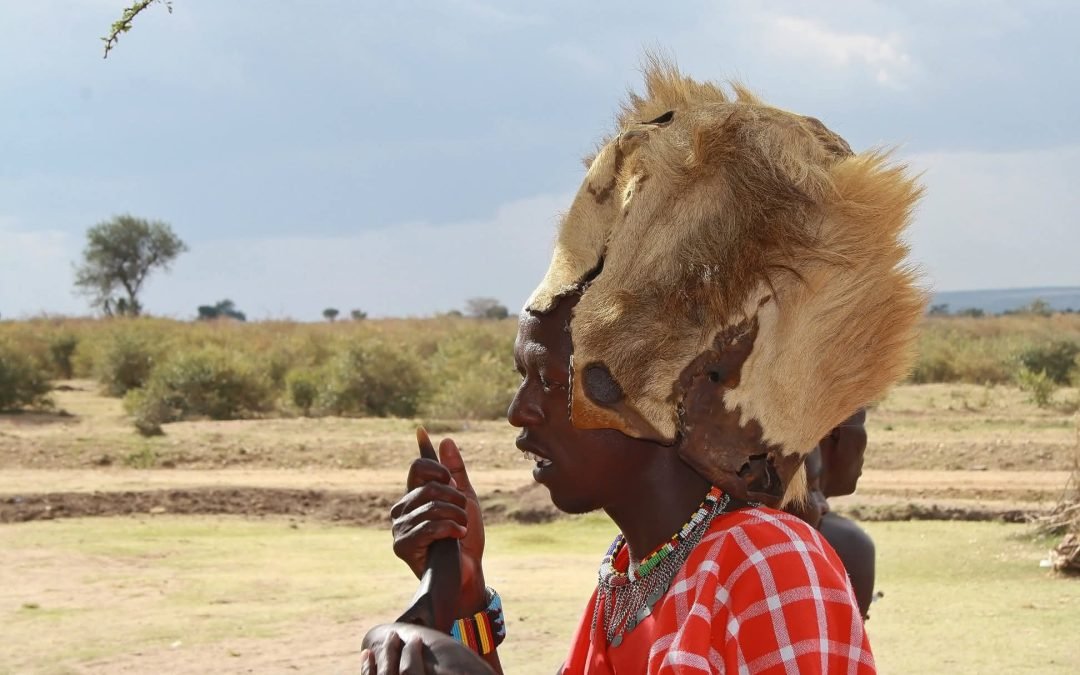
by Sangeetha Vallat | Jul 10, 2025 | Passport Pages
CHAPTER 2 HAKUNA MATATA (NO WORRIES)
Into the Wild: A Day in the Masai Mara
Mambo (Wassup), everyone!
Our stay at Siena Springs Camp was as close to an off-the-grid experience as you can get. The camp runs its generator from 5 AM to 11 AM and again from 6 PM to 11 PM, meaning any action after dark or before sunrise happens in complete darkness. Naturally, that meant planning our day around generator hours, and with the best game drives happening early, we decided to head out by 6:30 AM.
Except… I may have misjudged the time.
Excited for the day ahead, I jumped out of bed when I saw the lights were on, and assumed it was 5 AM. I promptly woke up Sujith, only to realize it was still 4 AM. His glare could have lit the tent on its own. The generator had come on early, and my internal clock betrayed me!
We were ready on time, but our co-travelers made a fashionably late appearance, and we finally set off at 7:45 AM. Before entering the reserve, we paused for some photos at the gate and picked up a few souvenirs from the friendly Masai (also Maasai) traders. With the van’s roof popped up two feet, we were ready to stand and soak in every moment, strictly instructed not to get down until the drive was done. Six hours in the wild… my only worry? The bladder.
Almost immediately, we were surrounded by a “dazzle” of zebras. They posed effortlessly, some staring curiously, others completely ignoring us. I could have stared at them all day, but a few minutes was enough for my eyes to see the black and white striped pattern everywhere. Thomson’s gazelles darted by, petite, elegant, and shy. Elands stood motionless, lined up like schoolchildren being punished.
The landscape stretched endlessly. With a pair of binoculars we’d bought just before the trip, I tried adjusting the focus over my spectacles. Easier said than done on the bumpy ride! Moses, our guide, had near-telescopic vision, and he spotted creatures far in the distance. We saw Secretary birds striding through the grass, displaying their plumes, the Kori Bustard – the heaviest bird capable of flight, and a colourful Barbet on a bare tree branch.
Then came the king.
A lion, resting in the bushes. Distant, but majestic. Through the binoculars, it felt like he was right in front of me. Sujith and I traded places between the camera and the binoculars, thrilled at the sight.
But it was the wildebeest migration that truly took our breath away. Millions. Yes, millions of them blanketing the plains, moving in herds, grazing, roaming. No photo or video could do justice to the sheer scale of this “confusion” of wildebeest. It was nature’s drama at its finest.
Midday, we stopped for a picnic under a tree. The camp provided a packed lunch, and we munched on sandwiches while standing around the van. Moses found us a secluded spot for a quick loo break. A truly wild experience, imagine hiding behind a bush in lion country, just hoping nature doesn’t come calling in return.
Later, we spotted a lone elephant silhouetted against golden grass and blue skies, a living painting. Tall grass made it tough to approach, but the memory lingers. We reached the Masai River, the famous crossing point of the migration. Here, wildebeests face the jaws of crocodiles as they cross into the Serengeti. It’s nature at its rawest.
And then, tinkle time again. I begged Moses, who reluctantly let me out. Sujith stood guard (not sure if he was protecting me from predators or saving himself from my whining). Minutes later, just as we rolled away, we saw her: a lioness under a tree. Then another. And another. Soon, we were surrounded-seven lionesses, seven people in the van. A perfect, pulse-raising standoff. They lounged, uninterested in us. Perhaps they were full. Perhaps we weren’t appealing. We moved on, exhaling in unison.
Giraffes have always fascinated me – they are graceful, tall, and oddly elegant. Maybe my yearning for a few extra centimetres in height was why I liked this tall creature. I’d first seen them at Al Ain Zoo in the UAE, since there are none in the Chennai Zoo. The Masai Giraffes were stunning with their unique patterns. Watching them stretch their necks for acacia leaves or awkwardly spread their legs to graze was a gentle contrast to the wild drama we’d just witnessed.
The buffaloes, one of the Big Five, stood their ground with a lazy, intimidating stare. A cheetah rested on a nearby treetop, completely unbothered by the crowd of safari vans. Above, vultures circled ominously. We missed spotting a rhino this time, but hey, maybe next trip!
Our last stop before heading back was a Masai tribal village just outside the reserve. The welcome was warm and colorful. One man, wearing a lion’s mane, claimed he had killed a lion at age 10. “Folklore,” Moses whispered, smiling. But when I showed his photo to my young friend Parik in Dubai, his eyes sparkled. “He’s like the Black Panther!” he said. The man’s stick, he insisted, must be vibranium. Whatever!
The Masai men performed their famous jumping dance. We learned that the higher a man jumps, the more desirable he is as a groom, apparently, a key factor in winning a bride. Women sang joyfully, and I joined in a playful attempt to mimic their steps. The chief’s son explained their customs: multiple wives, dowries paid in cattle, and a tight-knit extended family structure. He would soon marry a girl chosen by his parents, and hoped to stick with one wife! He explained that the first wife was selected by his parents, but the rest were his wishes.
We purchased some handmade tribal artifacts before returning to camp, just as thunderclouds gathered. I managed to snap a few shots of the tents and surroundings before the skies opened up. Rain poured down, accompanied by thunder and lightning — a dramatic finale to an epic day. The chill, the sound, the wild energy, it felt like nature was putting on a show just for us.
As the raindrops drummed the canvas tent, we knew: the wildebeest were on their way to Tanzania, across the Masai river, and we had been lucky enough to witness their journey.
Coming up next: Falmingoes, flies, and dancing matchsticks.
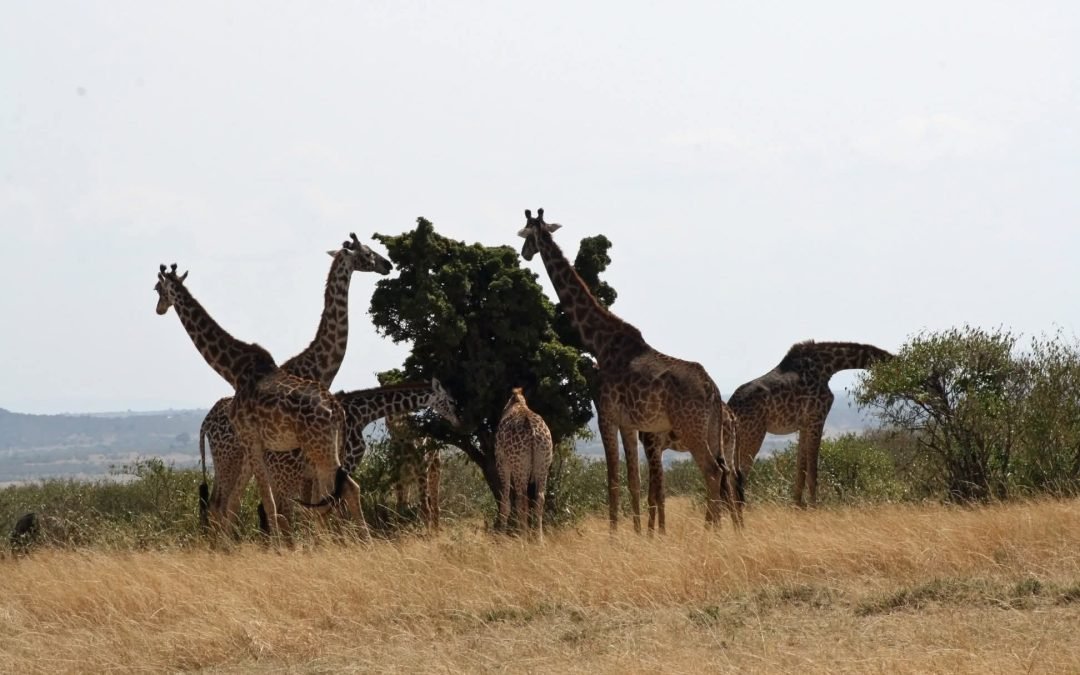
by Sangeetha Vallat | Jul 10, 2025 | Passport Pages
We travelled to Kenya in August 2018, and I wrote this blog post in September 2018 when the memories were fresh. I jotted down info on my Samsung Notes during the trip. I had learnt a few Swahili words and exhibited my knowledge to the locals. Our guide, Moses, had answers to all my questions. Since the others in the van weren’t keen on sitting in the front seat, I hopped into the seat beside the driver, clicking pictures, pointing at trees, birds, animals, and buildings, and shooting questions. Sujith asked if I had plans to take up a job as a guide in Kenya. This travelogue is a 4-part series.
Chapter 1 KARIBU (WELCOME)
Into the Wild: From Dubai’s Glitz to Kenya’s Savannah
After the glamour-soaked high of Dubai, Jomo Kenyatta International Airport felt… ordinary. A cool breeze greeted us as we stepped off the flight, and already the contrast was stark. Living in Dubai spoils your sense of wonder; everything that isn’t gold-plated and gleaming feels underwhelming.
We were a group of 25: five Tamil-speaking couples with their energetic, snack-laden kids and the two of us. They were all neighbors back in Dubai and apparently, regular vacation buddies. At the arrivals, we were met by representatives from Sawa Sawa (which we learned means “OK OK” in Swahili), partners of Akbar Travels. A tall, dark man with an unpronounceable name gave us a welcome speech, laying out the rules and plans for the trip.
It was nearing lunchtime, and we had to wait for another group to land. The Tamil gang, ever generous, shared their chapatis and pickle with us. Kids equal snacks, and they had come prepared. We picnicked in the parking lot.
As we got ready to board the three minivans lined up for us, we were pulled aside. We’d be traveling with another couple, who would be arriving on a later flight from Dubai. Already tired from delays, the extra 1.5-hour wait did not improve our mood. We passed the time people-watching – jubilant groups of tourists streamed out of the airport, reminding us of Holden cars or pop bands (no relation, of course).
Our new companions arrived: a Malayalee couple with two kids. We were now complete.
Our driver, Moses, was a small, wiry man with an easy smile. The first thing I noticed? Crows. But not just any crows, these had white chests! Moses told us they were Pied Crows, or Corvus albus. Sujith gave me a knowing look. He knew I’d be testing our driver/guide’s patience with my curiosity. We took a few photos before beginning our journey to the Masai Mara National Reserve, approximately 280 km away, which is roughly a six-hour drive.
As we left Nairobi, I was glued to the window, capturing the stone buildings and suburbs with my camera. They resembled military quarters typically found in cantonments. The Malayalee family seemed disinterested, already half-asleep. But I was wide-eyed, soaking in every moment.
The Great Rift and a Greater Realization
We stopped at a viewpoint overlooking the Great Rift Valley escarpment near Mai Mahiu. The sign said it stretched from Israel to Mozambique—9,600 km. I couldn’t wrap my head around it. Such vastness! We clicked photos, browsed the curio shop (mostly just window shopping), and carried on.
As we drove, the landscape shifted dramatically. The Savannah opened up in front of us…a golden straw-hued carpet dotted with flat-topped Acacia trees. Mountains framed the horizon, the dense forest a striking contrast to the open plains. Sheep danced across the fields, cows grazed lazily, and to our delight, giraffes made a casual appearance. I took a deep breath, clean, crisp, pollution-free air.
A strange-looking plant caught my eye. Moses told us it was the Agave sisalana, commonly called the Sisal tree. He had a degree in biology, which meant I got a bonus lecture (which I loved). He explained how sisal is used to make rope, mats, and bags. Young plants resemble a pineapple shrub, and as they grow, a tall stalk emerges with bushy, flower-like structures. Locals use them to mark land borders. (Yes, I Googled it later!)
The Final Stretch: Bumpy Roads and Bladder Battles
The last hour of our drive was brutal; there were no roads, just bumpy tracks. But Moses powered through like the biblical Moses parting the sea. It was near sunset, and by the time we entered the forested area, it was pitch dark. Our camp, Siena Springs, was supposed to be close… but in the absence of light or signboards, we were truly lost.
Then came my moment of crisis: my bladder gave out a distress call. I pleaded with Moses to stop, but he refused. “Too dangerous,” he said. Wild animals roam at night. But desperate times… I insisted, jumped out of the van with Sujith following, our very own till-death-do-us-part moment. The others closed the van doors and remained in place.
Eventually, after going in circles, we stumbled upon a workers’ lodge, and they guided us to our camp.
The Camp at Last: Under African Skies
The Siena Springs camp was straight out of a dream. Tents nestled in the jungle, a wooden deck, and a table for two outside. Inside, a cozy bedroom and a simple wash area. There was no electricity….just a generator that ran for a few hours, but I didn’t mind. Moonlight bathed the camp, and the only sounds were those of nature.
I worried about snakes and bugs, but was reassured. An electric fence surrounded the camp, and surprisingly, I didn’t spot a single insect. Dry season, I guess, they were on vacation too.
A hot shower and a Sawa Sawa dinner later, we collapsed into bed, sleeping like logs under the starry African sky. Exhausted, but already in love with Kenya.
Coming up next: Wildlife safari and sightings, and jumping Maasai.
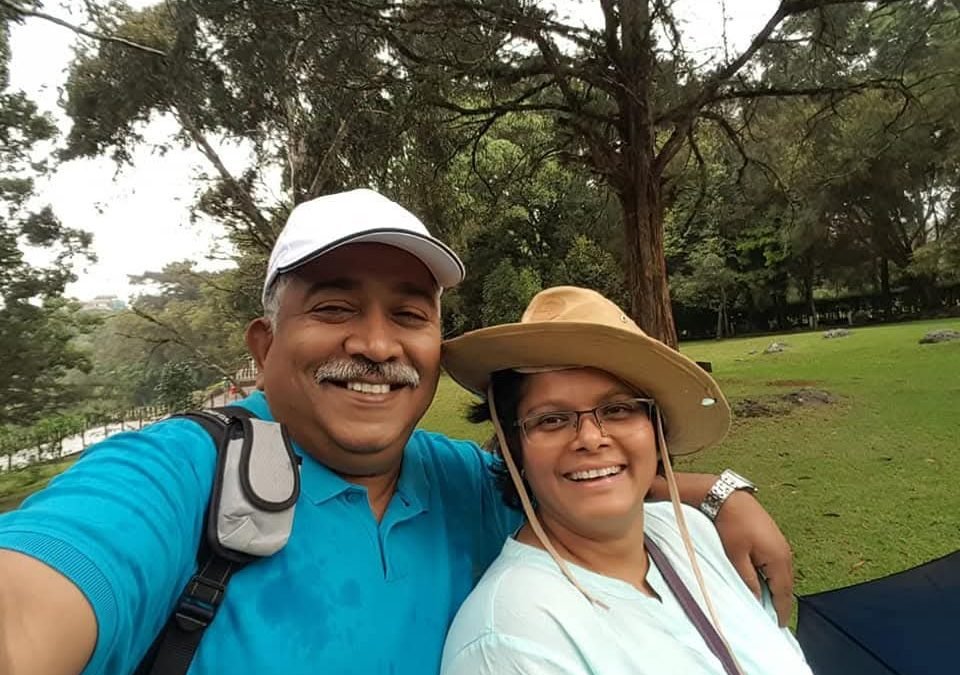
by Sangeetha Vallat | Jul 8, 2025 | Passport Pages
In September 2018, I wrote this blog post. I went through a whole gamut of emotions in the preceding months – excitement about travel plans, crashing dreams, and a ray of hope. Posting it in the Passport Pages, as this is a prelude to my upcoming travelogue.
Bucket Lists and Bitter Vegemite.
Everybody has a bucket list. Things to do, places to see, experiences to collect, all before, well, kicking the bucket. Don’t you have one?
If not, here’s a little nudge: grab a diary or your phone and jot down everything that comes to mind. You don’t need to be past 60 or face a health scare to make that list. In fact, the earlier you start, the better. Begin in your teens, add to it over time, and strike things off as you go. That way, you’re not racing against time, you’re travelling with it.
My own list? It’s long. Ambitious. Maybe even unrealistic. But that’s the fun part, I might never actually empty my bucket. And I’m okay with that.
Sujith and I always loved to travel. So, naturally, I asked him once to write down his travel wishlist. Where mine had 25 destinations, his had… just three. “Whattt? Only three?” I asked, surprised. Sujith smiled and said, “I’ll refill the bucket as I go.” Smart guy. True to form, he ticked off all three places. Me? I was thrilled just to strike off one that we had in common.
At the very top of my list was Australia. Watching Travel & Living, getting hooked on MasterChef Australia, and devouring Bill Bryson’s Down Under made Australia my ultimate dream. I was over the moon when we finally planned a vacation there: Cairns and the Great Barrier Reef (I even took swimming lessons for that!), the Gold Coast, Sydney, Melbourne—the whole package.
Hotels booked, flights reserved, and an itinerary prepared (complete with historical notes for each location, thank you very much), with countless hours spent on YouTube scouring details, everything was perfect.
And then, the visas were rejected.
Since we had to provide flight and hotel bookings with the application, we had gone all-in. We were supposed to travel with a cousin and their family from India, and their visas were approved. Sujith, knowing how crushed I’d be, kept the rejection to himself for a bit. When he finally told me, it felt like the air had been sucked out of me.
It wasn’t just the loss of money. It was the loss of a dream. I stopped watching travel shows. I avoided anything that reminded me of vacations. Can you believe I even bought a jar of Vegemite to get “used to the taste” before the trip? It’s still sitting at the back of my kitchen shelf like a bitter souvenir of what never was.
Then came the Eid holidays.
I didn’t even want to suggest a trip. But Sujith knew I needed a break. We decided to explore last-minute options and called a few travel agencies- places where Indians could get a visa on arrival. They all said the same thing: “Fully booked.” Georgia, Baku, and Kenya were the top picks. But no luck. Until a friend gave us his cousin’s contact at Akbar Travels.
We called, without much hope. They said they’d get back to us. We shrugged and decided to chill at home, binge some web series, and let the holiday pass us by.
Then, the unexpected happened.
Sujith called from work, telling me to get ready, we had two seats on the Kenya trip. A last-minute cancellation had opened up. We rushed to the agency, paid immediately, and walked out with our itinerary in hand. It felt surreal. We didn’t tell many people; afraid the jinx might return. Just my mom and Sujith’s brother knew.
But that anxiety still hovered.
Our flight from Dubai to Jomo Kenyatta Airport in Nairobi was delayed by 2.5 hours. I was a bundle of nerves. The Kenya Airways Dreamliner wasn’t the most comfortable experience, warm cabin, and even after complaining, the temperature didn’t improve.
Still, I kept my fingers crossed, heart pounding, until I had that visa stamp on my passport.
Finally, at immigration, I offered my brightest smile to the friendly officer and said, “Ahsante Sana” with all the Swahili charm I could muster.
Dreams may crash. But sometimes, they find new wings.






